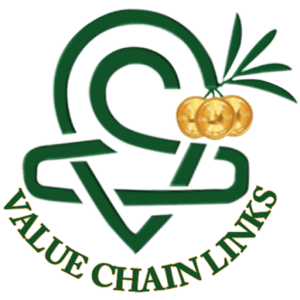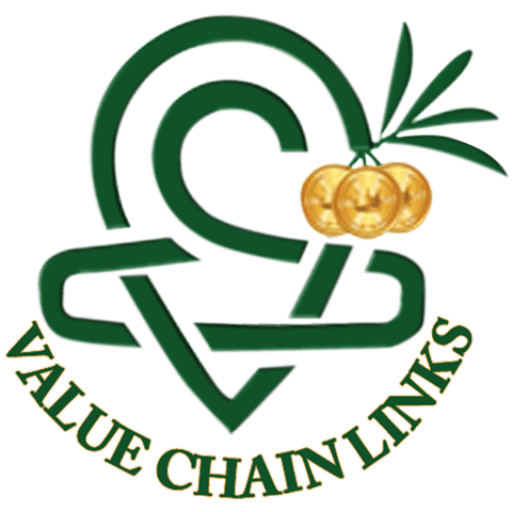WHY IT IS THE PRESIDENT’S JOB TO SOLVE THE PROBLEM OF FRUIT FLIES!?

by dr. Nimrod
BORN WITH A “SILVER SPOON”
My parents worked hard all their lives to build a prosperous kibbutz farm.
Thanks to this, when I started to work in agriculture, my basic needs like housing, food, healthcare, academic studies, etc., were already secured.
Effortless, I became a partner in a thriving agriculture business of my Kibbutz.
In my eyes and those around me, my business was booming, so I too was considered as “a success”. It meant that my emotional, social, and business needs came to fruition.
In my professional life, back then, as a fruit grower, I had a fleet of tractors, sprayers, and access to a variety of poisonous (and not so effective) pesticides.
I had to protect yield worth over 50,000 $ per hectare, and for this purpose, I had to choose which chemical I should spray each time.
As an active fruit grower in an advanced economy, for me, fruit flies were “just another pest”. Like my colleagues, I framed fruit flies simply as – A PEST CONTROL PROBLEM.
There were still times when I experienced momentary professional problems, such as fruit fly significant infestation.
In those few cases, I may have lost 20% of my potential income, meaning 10,000 $ per hectare. Yet, I and others framed it as “a crop protection/fruit fly problem”.
However, it wasn’t “a big deal” since I had few alternative standard ways of dealing with rare fruit fly infestation cases.
Besides, it didn’t impact my other life aspects, e.g., lifestyle, livelihood, emotions, social, and health, and I was still considered “a success”.
FRAMING THE FRUIT FLY PROBLEM
I was lucky, as my professional failures, i.e., fruit fly infestation, were short living. They cost me money but nothing more than this.
Rightly, I farmed the fruit fly infestation in my orchards as “A Normal Professional Problems,” one that we can accept and live with.
Note, a few years later, when I wanted to market my fruits without sprays, I reframed the fruit fly problem, this time as “A Marketing Problem”.
However, in emerging markets, things are significantly different. Consider the following facts, which represent the reality of African and Asian mango growers –
» A yield of ONLY 5,000 kg per hectare.
» The value of the yield if marketed to premium markets is ONLY – $ 5,000.
» The price per kg of mango is 50% to 90% LOWER in local versus premium markets.
» Fruit loss due to fruit flies is OVER 50% (ranging from 30% to 80%).
» It is forbidden to export (EXPORT BAN) from orchards infested by fruit flies.
» The income of most African and Asian mango growers range is ONLY $ 300 to $ 800 per hectare.
In practice, the income of a typical African/Asian mango smallholder grower is ONLY 1% (!!!) of that of an Israeli mango grower.

That fact calls for poignant questions.
- If your income is 99% less than your peers in advanced economies and 90% less than your (immediate) potential income without fruit flies – would you still frame fruit flies as a crop protection problem?
- If you and your family live in poverty – would you still frame fruit flies as a crop protection problem?
- If your family has no proper food, housing, transportation, healthcare, communication, infrastructures (electricity, water, sewage system, roads, etc.) – would you still frame fruit flies as a crop protection problem?
- If your children’s future is blocked because they have no access to proper education sewage – would you still frame fruit flies as a crop protection problem?
- If you view yourself as a failure, your emotional state, social status, health, and feelings are damaged, and you consider yourself as a failure – would you still frame fruit flies as a crop protection problem?
A FAILURE OF FRAMING
Case 1 – The potato blight disease in 1845-1849 has led to The Great Famine in Europe and the migration of millions from Europe to America.
Controlling the blight disease is crop protection “technical problem”. However, from 1945 to 1949, it caused a humanitarian crisis, which changed the course of modern history.
Case 2 – Mosquito-borne diseases annually kill over 400,000 (!) people, mostly African children, and hundreds of millions suffer from malaria.
Controlling mosquitoes in malaria-stricken areas is a “technical problem”. However, when inadequately managed, mosquito borne-diseases cause poverty, hunger, wars, deaths, and overall continuous humanitarian suffering and crises.
THE FRUIT FLIES’ CASE
When it comes to marketing, export, and income per hectare of fresh produce, the world is divided into two:
(1) Countries that provide strict fruit fly control, at a level suitable for year-round fresh produce export, and (2) others that don’t.
Most of the world’s farmers live in Africa and Asia. These continents are suitable for practicing agriculture, including growing high added-value crops sensitive to fruit flies.
The inability to properly manage fruit flies in Africa and Asia leads to the loss of ability to grow and market high-value crops to premium markets and … to get high income.
In parallel, this inability causes the increasing use of poisonous sprays, negatively impacting farmers’ health and livelihood.
The above-stated inability impacts millions of smallholders, some more than others. For example, the mango industry in sub-Sahara Africa and Asia is dominated by smallholders.
Their business results are catastrophic and involve the loss of 90% to 99% of the potential revenue per hectare.
Is it possible that smallholders live in poverty because of their catastrophic business results and that those results are related to fruit flies?
We should stop and ask, what are the short- and long-term effects and IMPACT involved in losing over 90% of potential income?
Put yourself in the place of smallholders. You can easily see how continuously losing 90% of your potential income impact – poverty, morbidity, poor nutrition, lack of infrastructure, damage to self-image and the social fabric, inability to provide proper education, desperation, etc.
As a result, the young generation sees its parents living in poverty, without progress, and without hope, and responds to this by mass migration to cities and countries where they expect to find some “hope” and a better future. Meanwhile, only the old generation remain to work the farms.

So, like the potato blight disease and mosquitoes, the control or eradication of fruit flies may be wrongly viewed as a “Technical Problem.” In fact, their impact is fundamental, economical, long-term, affecting millions of smallholders together with their family members and community.
The above reality already shapes modern history and, if not adequately addressed, may cause further human suffering and catastrophes.
We can frame the “fruit fly problem” in many names and ways, but to frame it as a “crop protection problem” is the same as framing mosquitoes and locusts as a biological nuisance and probably the least proper.
A WORLD OF OPPORTUNITIES
There is an urgent need to bring a better tomorrow to the humanitarian crises and suffering of millions of smallholders caused by improper ability to control fruit flies. At the same time, there is a growing demand for healthy, quality fresh produce.
To achieve the above explicit needs, we must improve cooperation among relevant stakeholders.
Such cooperation should cope with the urgent need to increase smallholders’ income (less poverty) and the availability of fresh produce for the world’s citizens.
This crisis poses the best business opportunity, in decades, in the agro-sector of emerging markets.
Think about the business implications of doubling high-value marketable produce of high-value crops, and you will understand the magnitude of the business opportunity we face. Now, keep in mind that this takes place over hundreds of thousands or even millions of hectares.
With such high market potential, you can imagine the expected pace and scale of such an operation and its ROI (Return on Investment).
Taking advantage of the business opportunity shouldn’t be complex with proper technology and knowledge when the starting point is as low as 1% of the income of advanced growers.
If you are still unsure about the potential business magnitude of such a historical act, think about what happened only 3-4 decades ago when China changed its attitude and started doubling its industrial production every few years, sometimes even in months.
However, unlike the Chinese industrial revolution, the SMALLHOLDERS’ GREEN REVOLUTION, when practice according to UN SDGs, will contribute to the world’s well-being and make it a better place for all.
THE TRINITY
It is not enough to understand the connection between fruit flies, the economy, and poverty.
For a better tomorrow, there is a need to combine three complementary elements:
A business model – suitable to extract the best business results for stakeholders.
Protocol – appropriate to the specific local conditions and requirements.
Technology – highly effective for the control/eradication of fruit flies.
The above trinity of joint activities is necessary but is not satisfactory and nor sufficient.
If we wish to bring the significant and swift change, as we want and expect, there is a need for a complete set of elements along the value chain.
This “set of elements” will serve as the overall infrastructure of the desired change and should account for all stages “from field to the supermarket shelf”.
It will be a (repeated) mistake IF the building is based on a working model used in advanced economies.
The combined “set of elements” and components responsible for creating “value” is called The Agricultural Package.
For decades African and Asian smallholders have been using an outdated Package. Hence their business results are poor, impacting their other aspects of lives and the country’s economy. It is time to introduce smallholders to a state-of-the-art Agricultural Package.
The Green Valley Package is a state-of-the-art Agricultural Package designed and made for smallholders in emerging economies on a business basis for all stakeholders.
The Green Valley Package is focused and designed to enable smallholders a rapid and continuous income increase.

| Thanks to making export-quality fruit fly control accessible and affordable, growers of high-value fresh produce, such as mangoes, avocadoes, and citrus, can finally market their produce to premium markets for a premium price.Until today, smallholders farming under the Green Valley Package doubled (and more!) their income, already in the first season of participation.The Green Valley Package’s profound economic results from smallholders’ point of view are remarkable only thanks to the deep understanding that fruit flies are not “just another pest”. Instead, fruit flies make the difference between POVERTY to PROSPERITY.Hence, the Green Valley Package is taking care (also) of fruit flies but is bringing a solution to the painful global problem of smallholders’ poverty. |
| TAKEAWAYS» FRUIT GROWERS are successful where fruit flies are not an obstacle to fresh produce export.» INEFFECTIVE fruit fly control results in an income loss of 90% to 99%.» AN ADVANCED “Agricultural Package” must have a dedicated part for controlling quarantine pests, such as fruit flies. |
| Please, if you found value in this article, it would mean a lot to me if you sent me a comment and shared it with your friends. |

